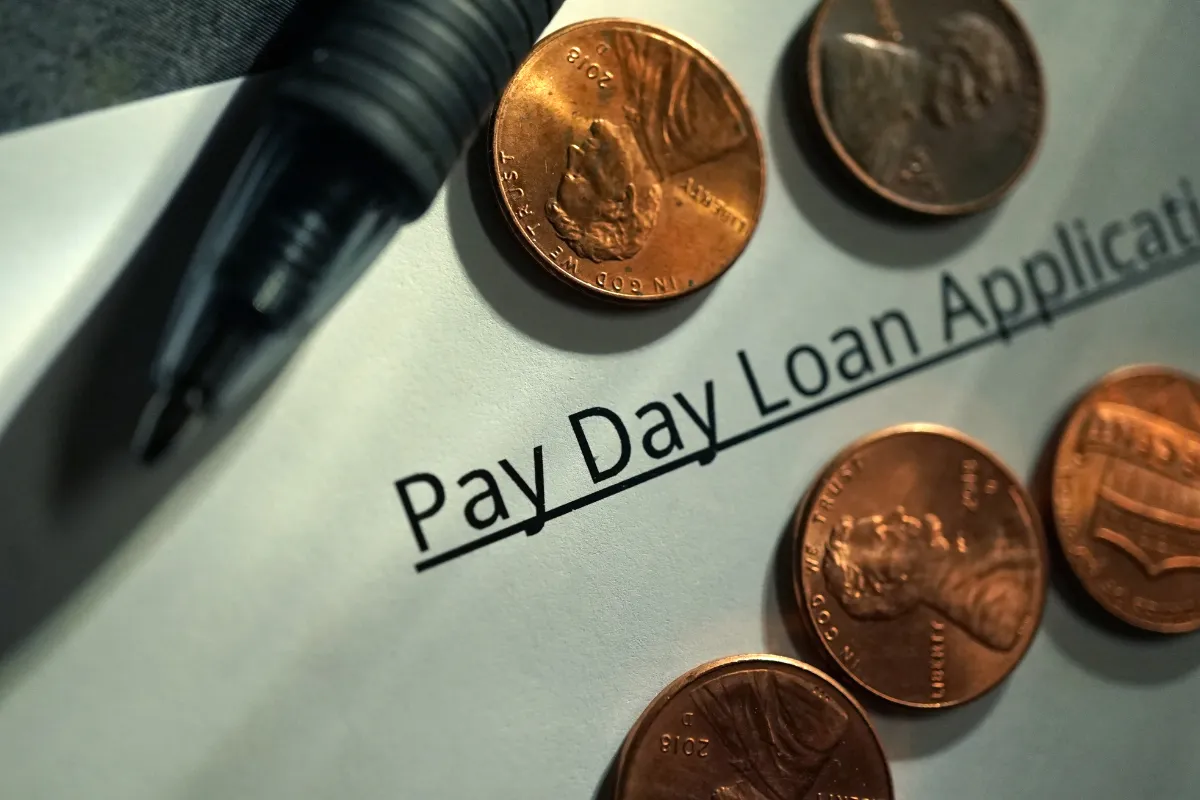What’s The Usual Range For Interest Rates For Payday Loans In 2024

Ad Discloure
iOnlinePayDay.com serves as a platform that links borrowers with payday lenders. We do not take the complete guarantee of its accuracy, completeness, or dependability. We encourage responsible borrowing and urge borrowers to consider alternative financial options before making a decision.xPayday loans are a convenient way for people in today’s financial environment to get quick cash when they have unexpected financial difficulties. However, it’s important to comprehend the nuances of the interest rates connected with payday loans before diving into the world of them.
In addition to providing information on how payday loans work and what borrowers should be aware of, this article seeks to clarify the usual range of interest rates associated with them.
What’s The Usual Range For Interest Rates For Payday Loans
Understanding the fluctuating landscape of payday loan interest rates is essential for borrowers navigating financial emergencies. Payday loans, renowned for their accessibility and quick approval processes, often come with interest rates that can vary significantly. The dynamic character of these interest rates is influenced by various factors, which in turn affect the borrowing costs and ultimate financial outcomes of borrowers.
Regulatory Influence:
State regulations play a pivotal role in determining the interest rates charged on payday loans. Each state imposes its own set of rules and limitations on the maximum interest rates lenders can charge, aiming to safeguard consumers from predatory lending practices. These regulations can vary widely, with some states imposing strict caps on interest rates while others have more relaxed policies, allowing lenders to charge higher rates.
Lender Policies and Risk Assessment:
Beyond regulatory constraints, lenders themselves have the autonomy to set interest rates based on their risk assessments and operational costs. Lenders consider various factors, including the borrower’s creditworthiness, income stability, and repayment capacity, when determining the interest rate for a payday loan.
Market Forces and Competition:
Market dynamics and competition among lenders also influence payday loan interest rates. In competitive markets, lenders may adjust their interest rates to attract borrowers while remaining profitable. Conversely, in less competitive environments, lenders may have more leeway to charge higher interest rates without fear of losing customers to competitors.
Typical Range for Interest Rates
What’s The Usual Range For Interest Rates For Payday Loans? Payday loan interest rates and fees usually range from 15% to 20%, though they may go higher depending on the lender. State rules control the maximum interest rate that payday loan lenders are allowed to charge. Whether a lender charges greater interest rates or considerably lower rates is entirely up to them. Ranges, however, can fall into specific categories:
Minimum Interest Rates:
Minimum interest rates are frequently attached to payday loans, and they might change based on the lender and the applicant’s area. These rates typically serve as the base amount that lenders charge for providing the loan.
Maximum Interest Rates:
On the upper end of the spectrum, payday loan interest rates can reach maximum levels, sometimes exceeding triple-digit percentages. These high rates are often a point of concern for borrowers and consumer advocates due to their potential to lead to financial hardship.
Average Interest Rates:
While specific interest rates can vary widely, the average interest rates for payday loans generally fall within a certain range. This range may fluctuate based on factors such as market conditions, regulatory changes, and individual lender policies. However, understanding the average interest rates can provide borrowers with a benchmark for evaluating loan offers and making informed decisions about their financial situation.
Understanding APR vs. Effective APR
When considering payday loans and their associated costs, it’s essential to grasp the distinction between Annual Percentage Rate (APR) and Effective APR. These two measures offer various viewpoints on the overall cost of borrowing and have a big influence on the choices that borrowers make regarding their finances.
- Annual Percentage Rate (APR): It’s a standardised measure designed to facilitate comparisons between different loan products. In the context of payday loans, APR provides insight into the nominal interest rate borrowers can expect to pay over a year, expressed as a percentage of the loan amount.
- Effective APR: While APR offers a standardised metric for comparing loan costs, it may not always capture the full picture of borrowing expenses. Effective APR, on the other hand, takes into account all fees and charges associated with the loan, providing a more accurate reflection of the total cost of borrowing.
Risks Associated with High-Interest Payday Loans
Payday loans carry a lot of risks, especially when they come with exorbitant interest rates, even while they can provide instant access to money in an emergency. Borrowers must be aware of these dangers in order to make wise choices and steer clear of any financial hazards.
Debt Trap:
Getting caught in a debt trap is one of the biggest risks connected to high-interest payday loans. Short repayment periods coupled with high interest rates might lead to an unbreakable cycle of borrowing and repayment. In order to pay off the initial debt, borrowers who find it difficult to make their loan payments on time may have to renew the loan or take out new loans, which creates a vicious cycle of debt.
Financial Instability:
High-interest payday loans can exacerbate financial instability for borrowers already facing economic challenges. The hefty interest charges associated with these loans can consume a significant portion of borrowers’ income, leaving them with limited resources to meet other financial obligations.
Limited Regulation and Oversight:
Another risk of high-interest payday loans stems from the limited regulation and oversight in the payday lending industry. While some states have implemented regulations to protect consumers from predatory lending practices, others have fewer restrictions, allowing lenders to charge exorbitant interest rates and fees.
Effect on Credit Rating:
Payday loan default and loan renewals on a regular basis might negatively impact borrowers’ credit scores. Payday lenders may employ third-party collection firms to seek delinquent payments even though they normally do not report to major credit bureaus.
Conclusion:
In closing, What’s The Usual Range For Interest Rates For Payday Loans. It’s critical for borrowers to comprehend the normal range of payday loan interest rates in order to make wise financial judgments. While payday loans might offer quick assistance in an emergency, borrowers should be mindful of the high charges involved and look into other choices whenever possible to keep themselves out of debt.
FAQs:
Q1. Are payday loan interest rates regulated?
Yes, interest rate regulations for payday loans vary by state, with some states imposing caps to protect consumers from predatory lending practices.
Q2. Is it possible to bargain for a payday loan’s interest rate?
While some lenders may be open to negotiation, payday loan interest rates are typically non-negotiable due to the high-risk nature of these loans.
Q3. How can I avoid the high costs of payday loan interest rates?
The high interest rates connected with payday loans can be avoided by looking into other loan options like personal loans, credit unions, or borrowing from friends and family.


